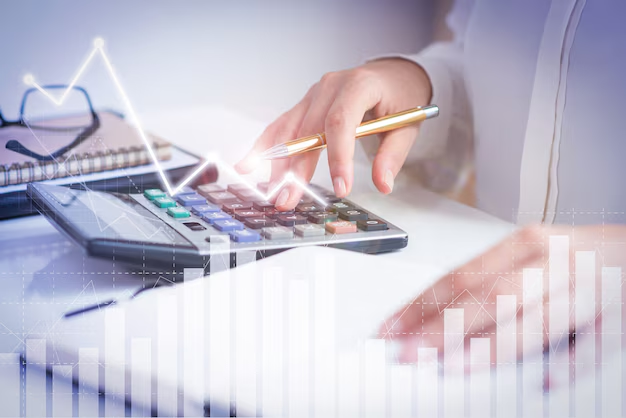Tom had just received a $25,000 bonus and wasn’t sure what to do with it. His checking account paid virtually nothing, but he’d heard about high-yield savings accounts, CDs, and money market accounts. “They all sound the same,” he thought, scrolling through conflicting advice online. “How do I know which one is actually best for my situation?” The decision felt overwhelming, especially since he might need access to some of the money within the next year.
If you’re like Tom, sitting on cash that’s earning next to nothing while trying to navigate the maze of savings options, you’re facing one of the most common financial decisions. With interest rates fluctuating and new products constantly emerging, choosing where to park your cash requires understanding the trade-offs between safety, liquidity, and yield.
The Three-Way Cash Parking Dilemma
When it comes to parking cash, you’re essentially choosing between three competing priorities: safety, liquidity, and yield. Understanding how each option balances these factors helps you make informed decisions about your money.
According to Bankrate’s latest rate survey, the average high-yield savings account pays around 4.5% APY, while CDs offer slightly higher rates in exchange for locking up your money. Money market accounts typically fall somewhere in between, offering competitive rates with more flexibility than CDs.
High-Yield Savings Accounts: The Flexible Foundation
High-yield savings accounts have become the go-to choice for many savers, offering competitive interest rates with full liquidity. These accounts are perfect for emergency funds, short-term savings goals, and money you might need to access quickly.
Key Features of High-Yield Savings
- Full liquidity: Access your money anytime without penalties
- FDIC insurance: Up to $250,000 per depositor, per bank
- Competitive rates: Often 10-20x higher than traditional savings accounts
- Easy access: Online transfers, ATM access, and mobile banking
Most high-yield savings accounts are offered by online banks, which can offer higher rates because they have lower overhead costs than traditional brick-and-mortar banks. According to Investopedia’s analysis, online banks typically offer rates 0.5-1.0% higher than traditional banks.
Best Use Cases for High-Yield Savings
- Emergency funds (3-6 months of expenses)
- Short-term savings goals (vacation, home down payment)
- Money you might need within 12 months
- Overflow from checking accounts
Certificates of Deposit (CDs): The Locked-In Strategy
CDs offer higher interest rates in exchange for committing your money for a specific term, typically ranging from 3 months to 5 years. The longer the term, the higher the rate, but you’ll face penalties for early withdrawal.
Understanding CD Terms and Penalties
CDs come with early withdrawal penalties that vary by bank and term length. Typical penalties range from 3-6 months of interest, which can significantly impact your returns if you need to access the money early.
Common CD terms and their characteristics:
- 3-6 months: Lower rates but minimal penalty risk
- 1 year: Balance of rate and flexibility
- 2-3 years: Higher rates, moderate penalty risk
- 5+ years: Highest rates, significant penalty risk
CD Laddering Strategy
Many savers use CD laddering to balance higher rates with liquidity needs. This strategy involves opening multiple CDs with different maturity dates, allowing you to access some money regularly while earning higher rates on the rest.
Money Market Accounts: The Middle Ground
Money market accounts combine features of savings accounts and checking accounts, offering competitive interest rates with some checking privileges. They’re ideal for savers who want higher yields than traditional savings but need more flexibility than CDs.
Money Market Account Features
- Competitive rates: Often similar to high-yield savings accounts
- Limited transactions: Up to 6 withdrawals per month (Regulation D)
- Check writing: Some accounts offer check-writing privileges
- FDIC insurance: Same protection as savings accounts
According to Time’s financial analysis, money market accounts can be particularly attractive for savers who need occasional check-writing capabilities while maintaining higher interest rates than traditional checking accounts.
FAQs
Are online banks safe for high-yield savings accounts?
Yes, online banks are just as safe as traditional banks when they’re FDIC-insured. The FDIC protects deposits up to $250,000 per depositor, per bank, regardless of whether the bank has physical branches.
What happens if I need to withdraw money from a CD early?
Early withdrawal from CDs typically results in penalties of 3-6 months of interest. Before opening a CD, consider whether you might need the money early and factor potential penalties into your decision.
How do money market accounts differ from money market funds?
Money market accounts are FDIC-insured bank products, while money market funds are investment products that aren’t FDIC-insured. Money market accounts are safer but typically offer slightly lower yields.
Should I chase the highest interest rates?
While higher rates are attractive, consider factors like customer service, account features, and ease of access. Sometimes a slightly lower rate with better service is worth the trade-off.
How often do interest rates change on these accounts?
High-yield savings and money market account rates can change monthly or even more frequently. CD rates are fixed for the term length. Consider this when choosing between fixed and variable rate products.
Case Study: Tom’s $25,000 Decision
Let’s examine how Tom could allocate his $25,000 bonus across different options, considering his need for both liquidity and yield optimization.
Tom’s situation:
- Needs $10,000 accessible within 6 months (emergency fund)
- Planning to buy a car in 12-18 months ($8,000)
- Wants to maximize returns on remaining $7,000
| Allocation | Account Type | Amount | Rate | Annual Interest | Accessibility |
|---|---|---|---|---|---|
| Emergency Fund | High-Yield Savings | $10,000 | 4.5% | $450 | Immediate |
| Car Fund | 12-Month CD | $8,000 | 5.2% | $416 | 12 months |
| Growth Fund | 2-Year CD | $7,000 | 5.8% | $406 | 24 months |
| Total | $25,000 | $1,272 |
This allocation strategy provides Tom with immediate access to his emergency fund, guaranteed access to his car fund when needed, and maximizes returns on his remaining money while maintaining FDIC protection across all accounts.
Regional Variations in Cash Parking Costs
Where you choose to park your cash significantly impacts your financial needs. Understanding regional cost differences can help you make informed decisions about your cash management strategy.
High-Cost Areas: Premium Living
In expensive areas, having more cash readily available becomes crucial due to higher living costs and unexpected expenses. High-yield savings accounts often make more sense in these locations due to their liquidity benefits.
Mid-Cost Areas: The Sweet Spot
Many savers find that mid-cost areas offer the best balance of opportunities and affordability. CDs and money market accounts often work well in these locations.
Low-Cost Areas: Stretching Your Dollars
In lower-cost areas, you might be able to lock up more money in CDs for longer terms, taking advantage of higher rates while maintaining adequate emergency funds.
Advanced Cash Management Strategies
Once you understand the basics, consider these advanced strategies to optimize your cash management:
The Bucket Strategy
Divide your cash into different “buckets” based on when you’ll need it:
- Immediate bucket: High-yield savings for emergency funds
- Short-term bucket: CDs for goals 1-2 years away
- Medium-term bucket: Longer-term CDs for goals 2-5 years away
Rate Shopping and Account Opening
Don’t limit yourself to one bank. Many savers use multiple banks to:
- Maximize FDIC insurance coverage
- Take advantage of promotional rates
- Access different account features
Tax Considerations
Interest earned on savings accounts, CDs, and money market accounts is taxable income. Consider tax-advantaged alternatives like high-yield checking accounts or municipal money market funds if you’re in a high tax bracket.
Making Your Decision: A Practical Framework
Use this decision framework to choose the right cash parking strategy for your situation:
Step 1: Assess Your Liquidity Needs
Determine how much money you need accessible immediately, within 6 months, and within 1-2 years. This helps you allocate between high-yield savings, money market accounts, and CDs.
Step 2: Compare Current Rates
Research current rates from multiple banks and credit unions. Rates change frequently, so check multiple sources and consider both online and traditional institutions.
Step 3: Consider Your Risk Tolerance
If you’re uncomfortable with early withdrawal penalties, prioritize high-yield savings and money market accounts over CDs, even if it means slightly lower yields.
Ready to Optimize Your Cash Strategy? The best place to park your cash depends on your specific needs, timeline, and risk tolerance. Start by assessing your liquidity requirements, then compare current rates across different institutions. Remember Tom from our opening story? After analyzing his needs, he chose a diversified approach that provided both liquidity and competitive yields. Your optimal cash strategy begins with understanding your unique situation and taking action today.
Your Cash Optimization Journey Starts Now
Remember Tom from our opening story? After researching his options and understanding his liquidity needs, he implemented a diversified strategy that earned him $1,272 in annual interest while maintaining access to his emergency fund and car savings. His approach demonstrates that you don’t have to choose between safety, liquidity, and yield—you can optimize all three with the right strategy.
The key to successful cash management isn’t finding the single “best” option—it’s understanding the trade-offs and choosing the combination that fits your unique situation. Whether you prioritize immediate access, maximum yield, or a balance of both, the right strategy can significantly improve your financial returns while maintaining the security and flexibility you need.
Your cash optimization journey begins with recognizing that even small improvements in interest rates can compound significantly over time. With the right knowledge and strategy, you can transform your idle cash into a productive asset that supports your financial goals while maintaining the safety and accessibility you require.






